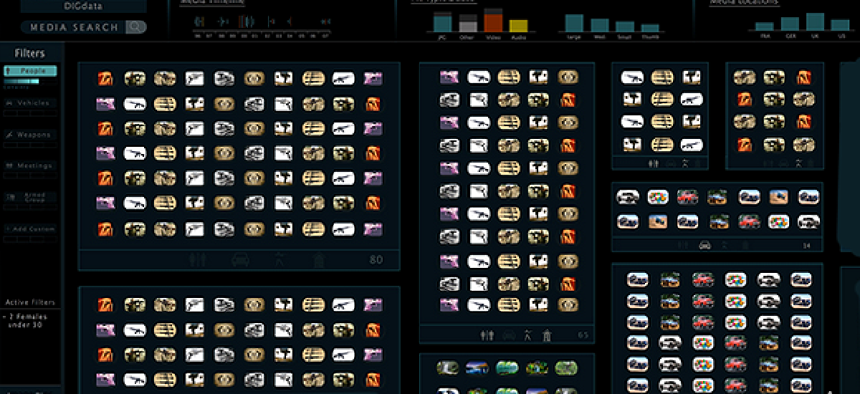DARPA develops new interface for image analysis


Connecting state and local government leaders
Developed by a researcher at the Army Research Lab, the new user interface will help intelligence analysts more quickly search, filter and detect patterns in visual media.
While other branches of the military have taken “man-machine” approaches to ease image analysis for personnel, the Army has developed a new user interface that helps intelligence analysts search, filter and explore visual media via computer vision and reasoning metrics.
The goal of the Defense Advanced Research Projects Agency’s Visual Media Reasoning (VMR) system is to “turn unstructured, ad hoc photos and video into true visual intelligence," said Jeff Hansberger of the Army Research Lab, who developed the technology. "Our adversaries frequently use video, still and cell phone cameras to document their training and operations and occasionally post this content to widely available websites. The volume of this visual media is growing rapidly and is quickly outpacing our ability to review, let alone analyze, the contents of every image."
Most intelligence analysts work images the same way: They first get an overview, then zoom in and filter the info and pull out the details they need. Hansberger used that insight along with his past experience of tailoring data visualizations for users, to create a user interface for VMR.
Hansberger also ignored technology restraints in his design. As such, he adapted touchscreen capabilities into image analysis and interaction, which he described as “the most effective and alluring way to interact with digital images.” This capability lets users zoom in and out for direct image manipulation – similar to how people use Google maps. Hansberger then retrofitted mouse and keyboard capabilities for easier integration into traditional settings.
Two main benefits of the design are speed and pattern-detection support. Hansberger found that users get lost navigating among various menus of a particular page, forcing them to create mental maps for landing on the page they desire. To speed up navigation, Hansberger created a flat interaction hierarchy where the zoom capability provides a simpler and faster means of navigation.
In terms of pattern detection, Hansberger played on the natural human cognitive strengths to see patterns in information to enhance the intelligence analyst’s ability to visualize and detect patterns. To do that, Hansberger said, he created “visual diagrams made from the images themselves to highlight patterns and relationships across the attributes that analysts focus on, such as time and the physical location the images were taken."
The better the system understands the questions users will be asking and shapes the information in the interface to answer those questions, the easier the analysts’ jobs will be, Hansberger said. “In the end, that's what it's all about; I try to put more effort in the design of the information and interface so the soldier spends less time thinking about the software and more time accomplishing their mission."




